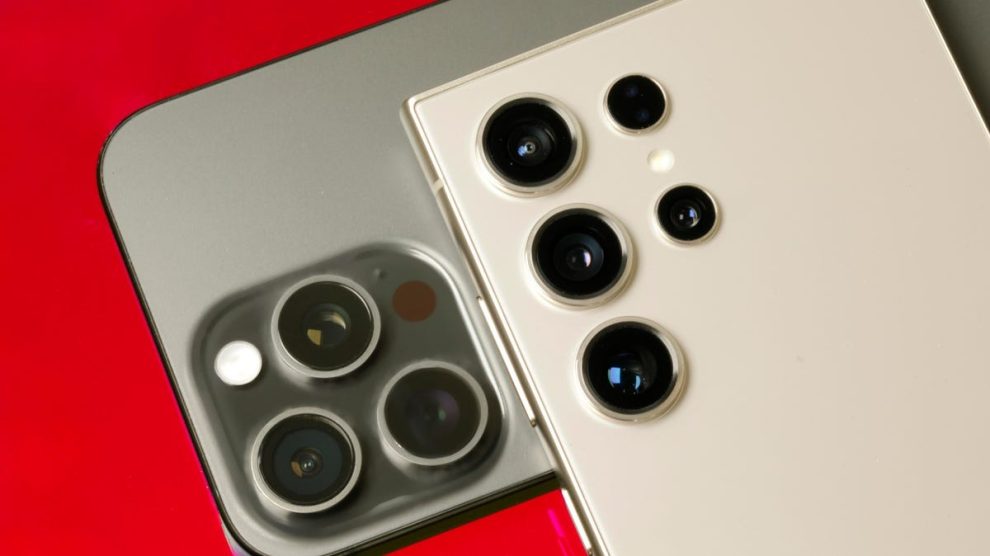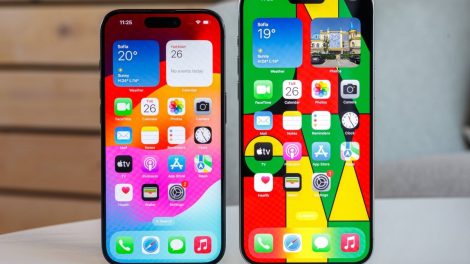As 2025 approaches, the anticipation surrounding new smartphone releases continues to build, with industry leaders preparing to launch devices that could redefine the mobile market. Companies like Apple, Samsung, and other key players are expected to unveil phones that will integrate cutting-edge features, enhanced performance, and user-focused innovations. From the eagerly awaited iPhone 17 to Samsung’s Galaxy S25, the coming year will likely see the introduction of technologies that push the boundaries of what you can achieve with a smartphone.

The iPhone 17 has been at the center of speculation for months, with rumors hinting at significant advancements in display technology, battery performance, and software capabilities. Apple is reportedly focusing on delivering a more immersive user experience by incorporating under-display Face ID technology, which would remove the notch and create a seamless screen design. Such an approach could mark a significant step forward in aesthetics while maintaining Apple’s commitment to secure authentication. Additionally, there is talk of a new generation of processors designed to optimize both speed and energy efficiency, possibly introducing even more advanced machine learning capabilities for features like photography, augmented reality, and voice recognition.
Battery life remains a critical concern for users, and Apple might address this by adopting solid-state battery technology. This innovation promises not only a longer lifespan and faster charging but also improved safety by minimizing the risks associated with overheating. Alongside these developments, the iPhone 17 is expected to use more sustainable materials in its construction, reflecting Apple’s ongoing commitment to environmental responsibility. Recycled aluminum and rare earth elements could feature prominently in the device, setting a new standard for eco-friendly practices in the tech industry.
On the other hand, Samsung’s Galaxy S25 is shaping up to be a direct competitor to the iPhone 17, with leaks suggesting a focus on foldable display technology. While Samsung has already made waves with its Galaxy Z Fold and Flip series, the integration of flexible displays into its flagship S series could signal a major evolution in smartphone design. By offering a foldable device that combines the best features of a tablet and a phone, Samsung might appeal to consumers seeking enhanced versatility for multitasking, gaming, and content consumption.
In terms of performance, the Galaxy S25 could feature a next-generation Exynos or Snapdragon processor, depending on the region, along with upgrades in RAM and storage capacity. Reports suggest that Samsung might also introduce a new cooling system to manage the demands of high-performance apps and prolonged gaming sessions. Meanwhile, the camera setup is expected to receive significant upgrades, with an emphasis on low-light photography and advanced zoom capabilities. By incorporating AI-driven enhancements, Samsung could ensure that its cameras remain among the best in the industry.
Beyond these two giants, other manufacturers are also gearing up for noteworthy releases in 2025. Google’s Pixel 9 series is expected to capitalize on the company’s strengths in software optimization and AI integration. Known for its computational photography, the Pixel lineup could introduce features that take smartphone photography to new heights. Advanced editing tools powered by AI and seamless integration with Google’s services could make the Pixel 9 a strong contender for users prioritizing software-driven experiences.
Chinese brands such as Xiaomi, Oppo, and Huawei are also expected to make significant contributions to the smartphone market. Xiaomi, in particular, has been focusing on ultra-fast charging solutions, and its next flagship might be capable of fully charging in under ten minutes. This kind of innovation could set new benchmarks for convenience and usability. Oppo, on the other hand, is rumored to be working on devices with rollable displays, offering an alternative to traditional foldable designs. Huawei, despite its challenges in the global market, remains a leader in 5G technology and could introduce phones with unparalleled connectivity features.
As the industry moves forward, one of the most noticeable trends is the integration of artificial intelligence across various smartphone functions. From predictive text and personalized recommendations to health monitoring and voice recognition, AI is becoming an integral part of how you interact with your device. This shift could lead to smarter, more intuitive phones that adapt to your habits and preferences over time.
Another area of innovation to watch in 2025 is display technology. Beyond foldable and rollable screens, manufacturers are exploring ways to enhance display quality through higher refresh rates, better color accuracy, and energy-efficient panels. OLED and mini-LED technologies are already commonplace, but the next step could involve micro-LED displays, which offer superior brightness and contrast while consuming less power.
Connectivity is also set to see significant advancements with the gradual rollout of 6G networks. While 5G is still being adopted worldwide, 6G promises to deliver even faster speeds, lower latency, and improved reliability. This could pave the way for applications like real-time augmented reality, remote surgeries, and seamless integration with smart city infrastructure. Smartphones released in 2025 will likely include support for these networks, ensuring they remain future-proof as connectivity standards evolve.
Environmental considerations will continue to influence smartphone design and production. With growing awareness of e-waste and resource depletion, manufacturers are exploring ways to make their devices more sustainable. Modular designs that allow for easier repairs and upgrades, along with initiatives to recycle old phones, could become more widespread. Companies might also introduce programs encouraging users to trade in their devices for discounts on newer models, further reducing the environmental impact of manufacturing.
Pricing strategies in 2025 are expected to reflect the competitive nature of the market. While flagship models will still command premium prices, the rapid pace of innovation means that features once exclusive to high-end devices are trickling down to mid-range models. This democratization of technology ensures that more users can access advanced features without breaking the bank. Additionally, subscription-based models for hardware upgrades, similar to those offered for software, could become a viable option for consumers looking to stay updated without a significant upfront investment.
The year 2025 is poised to be a transformative period for the smartphone industry. With advancements in hardware, software, and connectivity, the devices released during this time will offer capabilities that were once considered science fiction. Whether you’re drawn to the sleek design and performance of the iPhone 17, the innovative features of the Galaxy S25, or the unique offerings from other manufacturers, the options available will cater to a wide range of preferences and needs. As the year unfolds, keeping an eye on these developments will ensure you stay informed about the latest trends and innovations shaping the future of mobile technology.










Add Comment